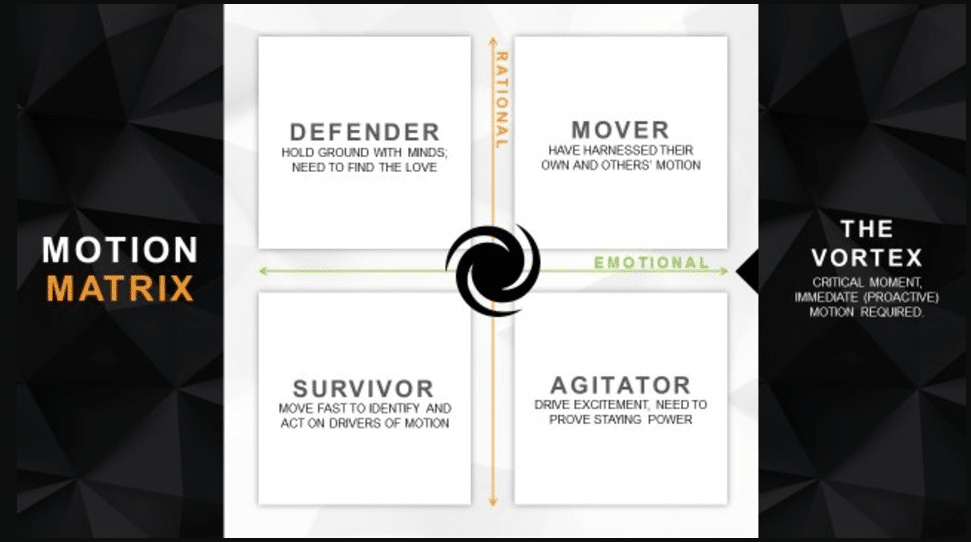New research from WE Communications reveals four realities brands face in today’s business environment and a construct to help manage their motion relative to forces pressuring them. ‘
Unlike brand positioning, which assumes a static view of consumer perceptions, brand motion takes into account the influence of broader environmental factors and underlying consumer expectations. WE’s inaugural Brands in Motion study exposes these factors that businesses can harness for the mutual benefit of brands and stakeholders.
“The environment brands are operating in is anything but static. It’s accelerated. Brands need to ask themselves critical questions: Are you propelling your brand? Is something or someone else propelling your brand? Or is it both?” said Melissa Waggener Zorkin, CEO of WE Communications, in a news release.

The study was conducted across China, the U.K. and the U.S. to examine both the rational and emotional drivers that motivate customer choices within today’s environment—to decipher brand movement relative to the geography, industry and key stakeholders. The four critical realities that emerged from that data include:
Reality 1: Stability is an element of motion
Despite all the rapid change at the environmental level, there is a high number of consumers that believe brands are capable of providing stability in uncertain times: 62 percent of study respondents in China, 42 percent in the U.K., and 48 percent in the U.S. said they believed brands can absolutely provide stability—creating a huge opportunity for brands to step up and offer new value to customers as a stabilizing force.
Reality 2: Cutting edge is transcendent
The study also found a high correlation between brands that are viewed as cutting edge, also being loved versus hated, seen as out for the common good versus doing harm, and viewed as a pleasure versus a misery to do business with. This connection strongly suggests that being cutting edge—whether enabled by technology or inspired by it—leads to positive brand outcomes in areas that transcend product.
Reality 3: The Unilever Effect
Across all three markets, half or more of surveyed consumers said they placed a balance on brands delivering not only highly effective, high-functional benefit products and services but also taking an active position on issues that provide long-term social value. Consumers increasingly expect brands to take a stand on important issues, especially if in direct conflict to their core values as an organization. This is almost equally weighted in purchase decisions.
Reality 4: Love you today, shame you tomorrow
Out of all eight categories surveyed across China, U.K. and the U.S., two out of three people said they loved the industry; however, nine out of 10 people said they would gladly join in public shaming of that industry if it stepped out of line. Brands today must build stronger emotional connections with consumers to keep customer loyalty—especially in times of crisis.
Motion Matrix
WE Communications developed a matrix to help brands understand and manage these realities and the larger environmental factors in play. The Motion Matrix is a diagnostic tool that uses rational and emotional scores to capture the movement of categories and brands against four quadrants.
“At its core, brand positioning is a flawed construct,” said Alan VanderMolen , president of International & WE+, in the release. “Brands need to understand and capitalize on the forces of motion around them and turn that into momentum. The Motion Matrix gives them a way to do that.”
Would consumers care if your brand disappears tomorrow? Will they publically shame you if you screw up? Will they forgive you? Do they see you as a misery or a pleasure to do business with? By understanding consumer mindset through the lens of motion, WE’s new Motion Matrix allows brands to not only see where they land, but get prescriptive guidance on what they can do to move.
- Those that score high in both emotional and rational drivers are Movers—a brand or category that has found the right balance of emotion and rational thoughts. They’ve learned to harness their own motion and the motion around them, but have to keep pushing and continue to find what’s next.
- High in rational but low in emotional drivers are Defenders. They may be selling commodity, low- margin/high-value products and services or be part of highly regulated industries. Many companies that fall here might be satisfied with being a Defender, but due to low emotional connection, they risk losing customer support in times of crisis. If they want to shift, they need to start engaging with consumers and finding the love.
- Low rational and high emotional scores fell into the Agitators These are the game changers, wooing consumers into what’s possible through high experience and engagement. They may be “annoying” movers with the strength of their emotional connection with consumers, but they have to prove accessibility and everyday benefit to lend credibility to their brand/category.
- A Survivor scores low in both emotional and rational drivers. These brands have either just pulled through something big or are on the precipice of needing to. They need to get laser focused on how to turn motion into an advantage for them—be ready to move fast to reach people on a rational and emotional level to move their brand to a leading spot in the industry—or risk becoming irrelevant.
WE’s Motion Matrix gives a lens through which to view motion not only at the brand and category level, but at the geographic level as well. The study revealed vastly different consumer mindsets in the three markets surveyed, with Chinese consumers being much more optimistic and the United States and United Kingdom having a much more skeptical outlook. This will give brands much stronger guidance on how to pivot their marketing and communications efforts to account for the prevailing mood of each market.
Download the complete study here.
WE partnered with YouGov to field the Brands in Motion survey in three countries among general public and B2B decision-makers. The benchmark was conducted in April 2017 in the U.S., U.K. and China and was designed to target a minimum of 4,500 consumer interviews and 1,000 B2B decision-makers per country with an average of 300 ratings per brand. It looked across eight categories and 30 brands within each geography, also capturing key demographic data to be able to plot the results against, including generation, gender, education, income, parent/nonparent, region, employment status, marital status and race/ethnicity.
The eight industry categories included Computing Devices, Smart Home, Automotive, Finance, Health & Wellness, and Alcoholic Beverages. The last two were among the B2B audiences: Technology Solutions for Business and Healthcare Solutions Providers.
WE plans to expand the Brands in Motion study to eight markets in its next iteration. The research complements the agency’s Stories in Motion pilot study released in November 2016.







